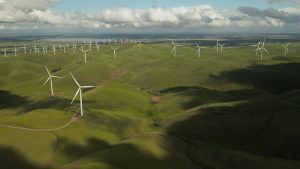

NTT Ltd.’s Global Chief Executive Officer, Abhijit Dubey, commented, “As one of the largest technology companies in the world, we have an obligation to make the world a more sustainable place. Employees, customers and partners are demanding that companies become more purpose-led. This is core to our NTT heritage, and I am incredibly proud to be announcing our commitment to reach net-zero emissions and broader strategic sustainability goals.
“This is a significant step for us, which will see NTT using technology not only to help the world become more sustainable, but also to be connected long into the future. We will continue making investments in technology, people and programs to achieve these goals.”
The company has joined the United Nation’s Race to Zero campaign. The company has already joined the Business Ambition Pledge for 1.5oC. It is also committing to the Science Based Targets initiative (SBTi). These will support businesses that are committed to meeting targets to limit global warming.
Three pillars to this net-zero strategic framework
NTT has announced three interconnected pillars to underpin this strategic framework to achieve net-zero. Each has its own set of goals.
- Connected Planet:
- Develop new and expand on existing partnerships to scale technology solutions focused on the protection and regeneration of biodiversity and ecosystems on every continent it operates in support of a more positive future by 2025
- Incorporate circular economy and regenerative design principles working in partnership across its operations, supply chain and client solutions by 2026
- Engage 50% of its employees in conservation and regenerative initiatives in their local communities in support of the UN SDGs and the UN Decade on Ecosystem Restoration by 2025
- Connected Economy:
- Grow its portfolio of smart solutions to support its clients and partners in decreasing 200m tonnes of greenhouse gas (GHG) emissions by 2026
- Establish a Sustainability Innovation Fund, review board and mentorship program to incubate ideas and scale the impact of climate tech and sustainable solutions and in support of the UN SDGs
- Connected Communities:
- Ensure that more than 50% of its workforce will belong to one or more of the diversity categories of gender, race, sexual orientation, socio-economic background and disability. To further reinforce this commitment, NTT will double the diversity of its executive leadership team with an emphasis on female representation by 2025
- Provide 5 million young people and children from underprivileged areas across the world with digital access and education to reduce inequality and build critical skills and opportunities for a connected future by 2030
- Enable and empower its employees to contribute 1 million hours of volunteering to support the initiatives forming the three interconnected pillars and in support of the UN SDGs by 2025
A need to look closely at company assets
Getting to net-zero will be challenging for all organisations. What NTT has set out here are ambitious goals, but there are questions to be asked. The most obvious is about data centres. Targeting renewable energy for all its data centres by 2030 is no small task. But renewable energy is just one small part of the carbon cost of a data centre.
How will NTT build more eco-friendly data centres? What materials can it use in construction to reduce the carbon impact of the building? There are new forms of concrete that are far less CO2 intensive than the current product. Will the company commit to shift its use towards those?
Steel is another big challenge in buildings. Some steel manufacturers are looking at how they move away from coal to a less carbon-intensive process. Will NTT make buying from those suppliers a priority over those who still use dirty fuels?
A more pressing issue for many data centres is water usage. Will NTT make all new data centres water-free or ensure no impact from its water usage?
Where it owns premises, it can do a full CO2 assessment and make them greener. But what about those premises it leases? Do its leases allow it to insulate a property better or change the windows to reduce heat loss? What about car parking? How quickly will it install charging points to persuade staff to move to electric vehicles? How quickly will it transition its global fleet of vehicles to be fully electric?
A need to look outside the company
There is also a need to look outside of those areas that the company directly controls. For example, NTT has a very large body of small to mid-sized suppliers. How will it help them reach net-zero? How will it monitor the amount of CO2 generated by those suppliers when they deliver to NTT? It is a serious challenge that few companies are in a position to manage properly.
This is also something that Sage UK has called out in its latest report. It believes that large corporations and governments need to create simpler reporting mechanisms for small suppliers. It also wants to see standardisation of how reporting will be done to reduce costs for those suppliers.
Another challenge, and one that is arguably more complex, is assessing the impact of remote working on CO2. Like many organisations, NTT sent many staff home at the height of the pandemic. A number will want to continue that remote working option. But how will NTT account for the CO2 costs of its remote staff?
If staff are working from home, then the CO2 generated by that home office must be calculated. It will not be easy. It might include looking at energy used to heat the home office and run equipment. There is also a wider set of data to be gathered about insulation and recycling habits. That data helps organisations assist their staff in improving their carbon reduction goals and provides a more accurate figure of CO2 generation.
Enterprise Times: What does this mean?
NTT’s plans are ambitious, especially in terms of renewable energy for data centres and net-zero. The fact that it is going beyond the pure carbon reduction to include communities is just as important. It shows that the company is listening and responding to the global conversation about society and the planet.
But, announcing plans and getting there are two wholly different things. The goals it has listed should be achievable. Whether it can hit the additional questions that Enterprise Times has raised here remain to be seen.
It’s also important to note that those additional questions apply to every organisation announcing net-zero goals. How many will have answers as they rush to demonstrate their eco-credentials in the wake of COP26? Enterprise Times does not expect it to be many.


























